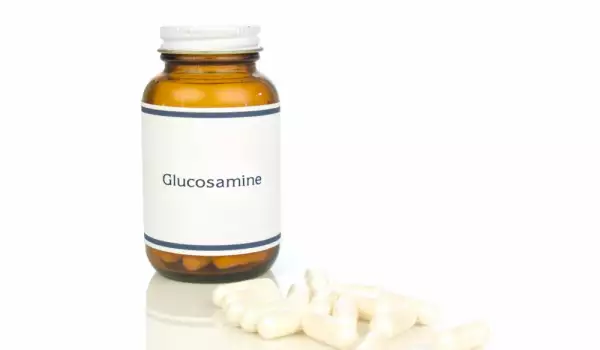Glucosamine is a complex of sugars and amino acids, that take part in the direct synthesis of substances known as glycosaminoglycans. They play an important structural role in the human body. Glucosamine serves as a component part of connective tissue and cartilage.
It assures joint mobility and at the same time slows cartilage tissue loss around joint surfaces. With age, the concentration of glucosamine in the body decreases, which leads to the development of numerous joint diseases, such as osteoporosis and arthritis.
The human body uses glucosamine to create its own lubricant in order to decrease the amount of friction between bones in the areas where they come together. Over the years, this lubricant wanes, with 2 reasons for this: as we age the processes in the body that produce the components of glucosamine slow down, and the 2nd is that bones have undergone more wear-and-tear as a result of aging. This requires taking supplements of glucosamine to assure joint health and comfort.
Uses of Glucosamine
Glucosamine finds a wide range of use in the recovery from different diseases. The serious disease osteoarthritis is successfully affected by glucosamine intake, with the effect consisting of its ability to produce synovial fluid and stopping the friction between the parts connecting the kneecap, femoral and tibial bones.
Glucosamine has the ability to strengthen a worn and fragile joint capsule, which is a serious complication in osteoarthritis in joints. Taking the supplement provides the necessary micronutrients that fortify the joint capsule.
Glucosamine is also used against back pains and glaucoma but there still have not been enough studies held to categorically put it on the list of therapies for these painful conditions.

Glucosamine has an extraordinarily beneficial effect when it comes to gaining control over rheumatoid arthritis, by easing pain symptoms in the affected joints, while at the same time decreasing the level of inflammation and frequency of the pain flare ups.
According to some unconfirmed data, increased intake of glucosamine can help numerous conditions, among which are Crohn's disease, chronic venous insufficiency, ulcerative colitis and some dermatological problems.
Taking Glucosamine
In natural form, glucosamine is primarily found in the shells of certain seafood, while getting additional doses usually happens in the form of dietary supplements. These supplements are made chiefly from the shells and exoskeletons of crabs, lobsters and shrimp, because they are most concentrated there in natural form.
In stores, glucosamine is offered in 3 main forms - N-acetylglucosamine, glucosamine sulfate and glucosamine hydrochloride, the most common form being glucosamine sulfate.
The glucosamine-containing supplements speed up the process of joint and immune system recovery. These can be found in standalone supplements (containing only glucosamine sulfate), or in complex supplements, which means they contain vitamins and the substance chondrin.
Supplements usually come in the form of tablets, with the amount of glucosamine in them varying from 500 to 1500 mg. These types of supplements are available in certain fitness centers, online stores, pharmacies, sports/health food stores.
The best time to take glucosamine is after consultation with a doctor (endocrinologist and/or orthopedist), having tests done and a detailed analysis of the risks of taking it. Taken glucosamine is absorbed in the small intestine and is then transported to the joins and liver.
Foods with Glucosamine

Even though the highest concentrations of glucosamine are in certain types of seafood, it can be found in other foods as well. Great sources of glucosamine are spinach and parsley, as well as animal bones and cartilage. An excellent source of glucosamine is bone broth from meat that has been boiled for an extended period with the bones. Meat from mussels also contains glucosamine but in very miniscule quantities.
Dangers of Glucosamine
Short-term intake of glucosamine does not lead to side effects in the body and is actually perfectly healthy for day-to-day use. However, long-term intake of supplements containing glucosamine can cause muscle spasms and flatulence. Diabetics need to be careful when taking this supplement because it is possible for it to lower blood sugar levels during extended use.
Glucosamine possesses a strongly expressed allergenic effect - it acts as an allergen in the body in people who are allergic to seafood delicacies, jellyfish and mussels.
For people suffering from asthma, glucosamine must be taken in small doses and for short periods because there is a real danger of it causing asthma attacks.
Another negative action of glucosamine is its speeding up the cancer cell division, therefore those sick from cancer and especially ones undergoing chemotherapy should not take this food supplement.
The effects of glucosamine in pregnant women and breastfeeding women are still not fully clear.







Comments